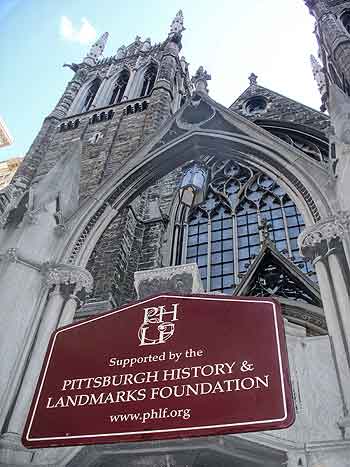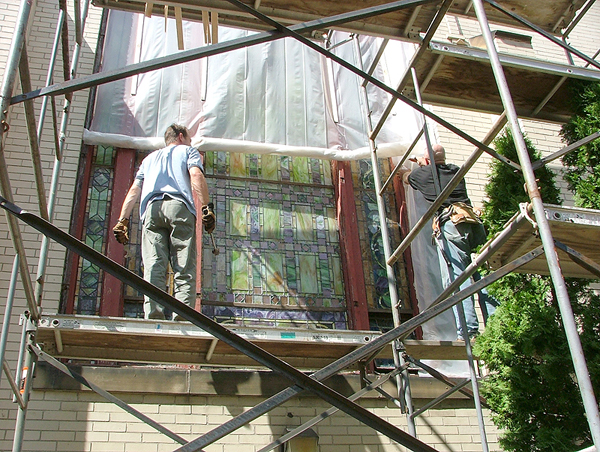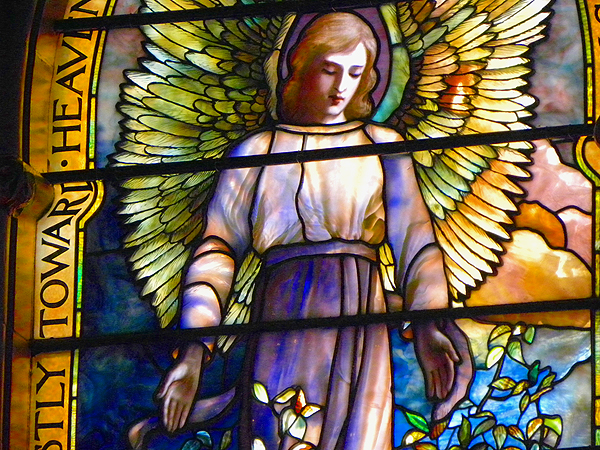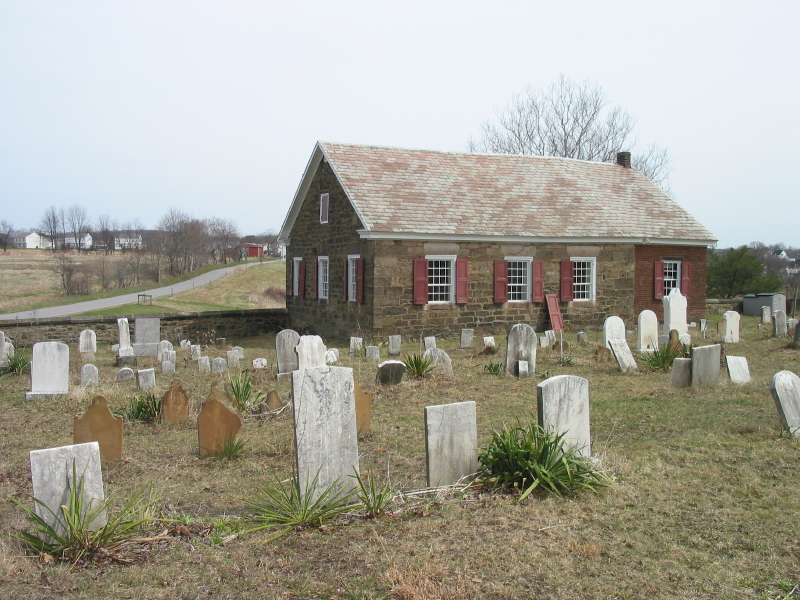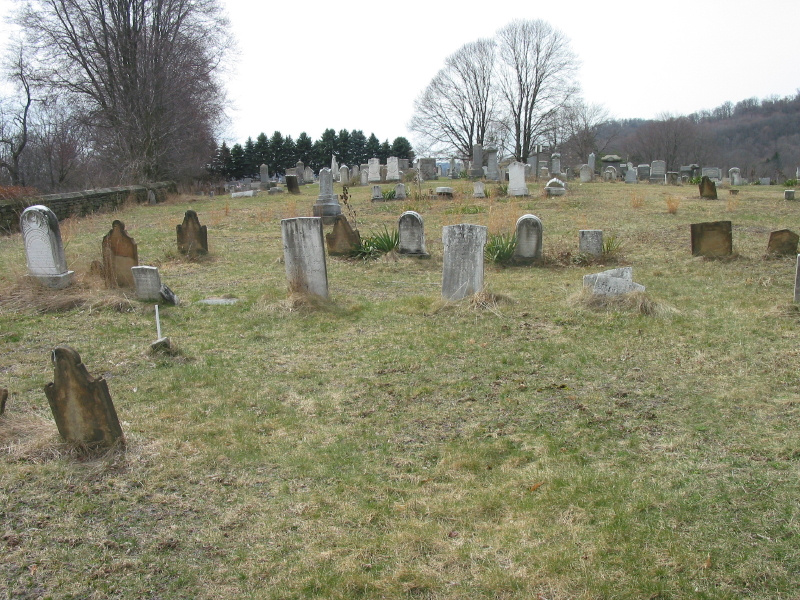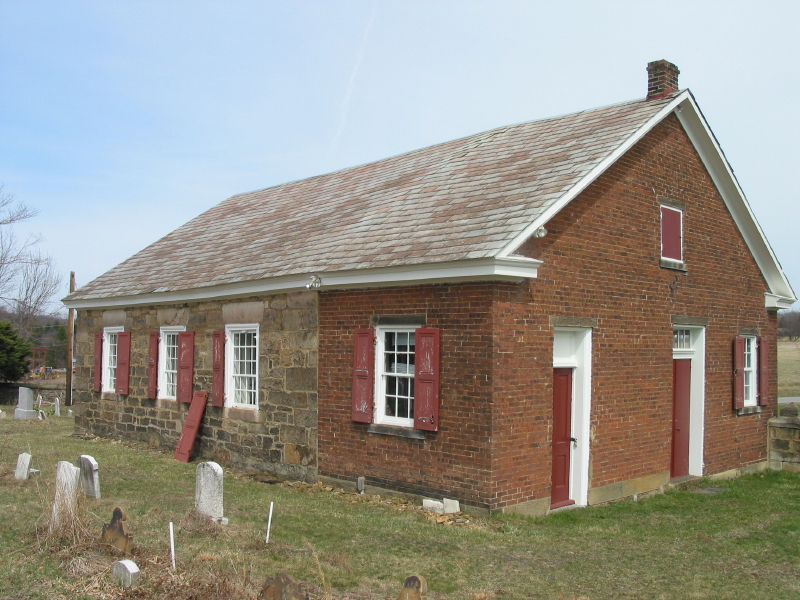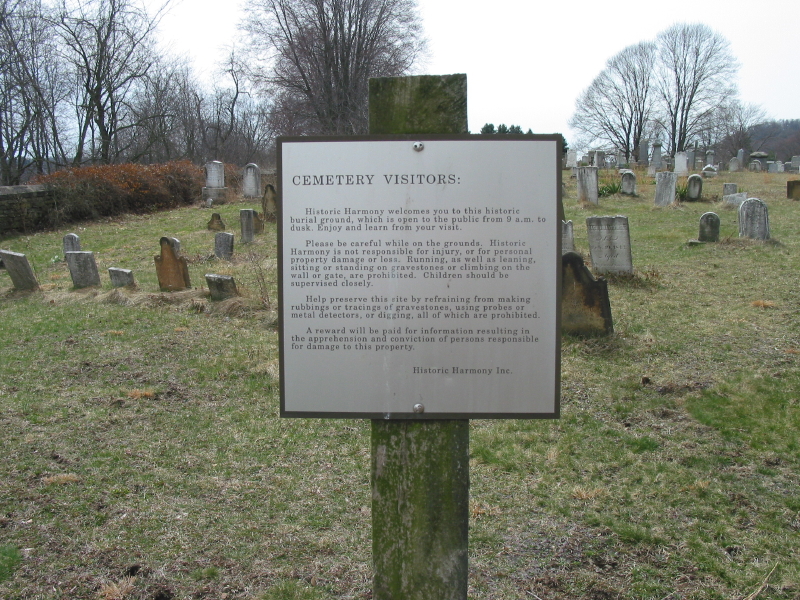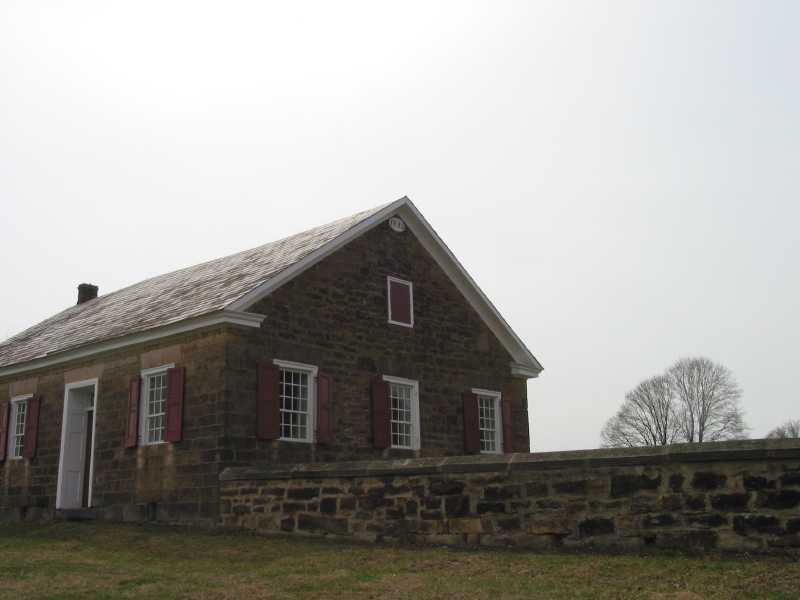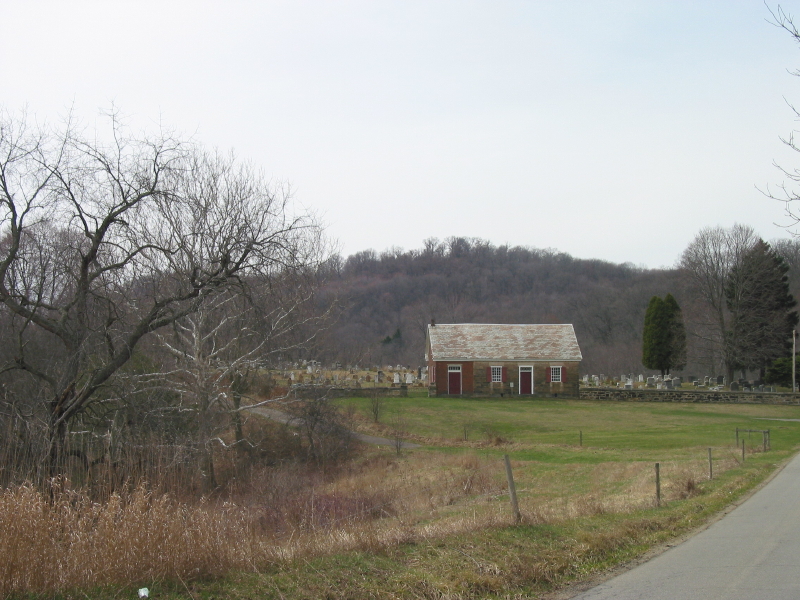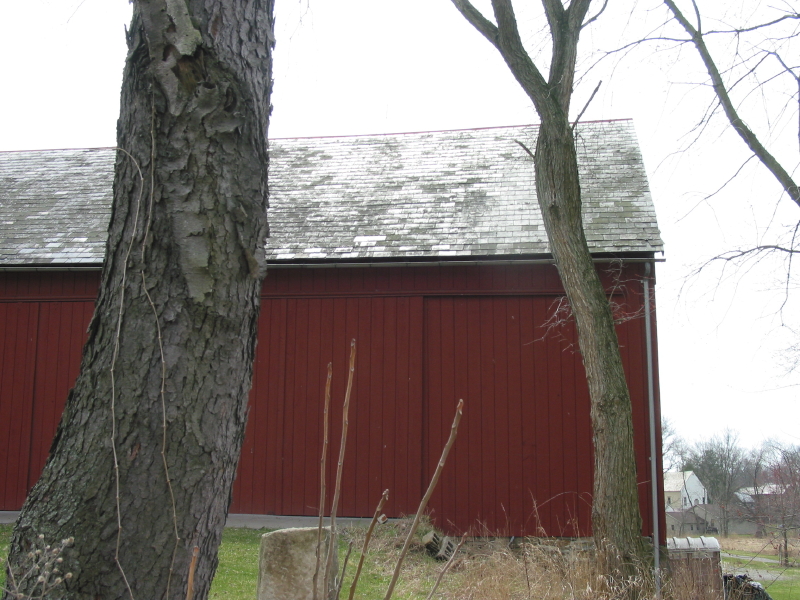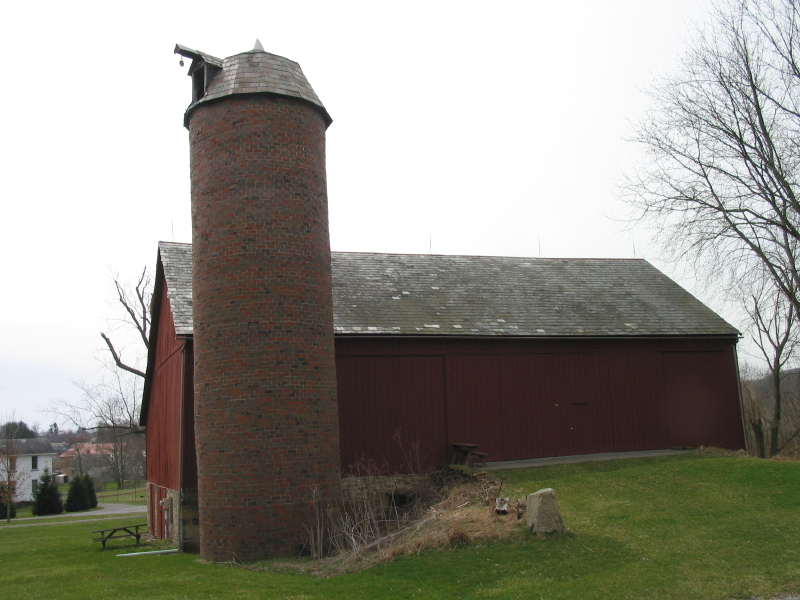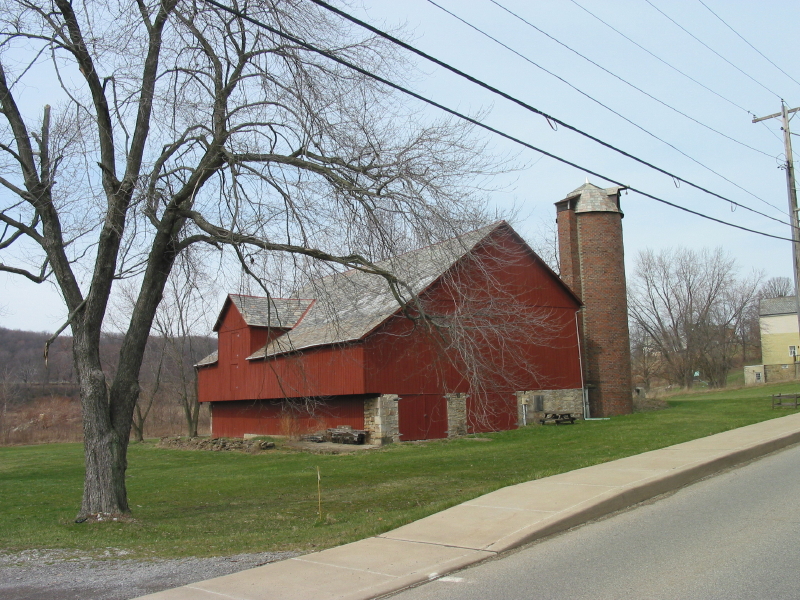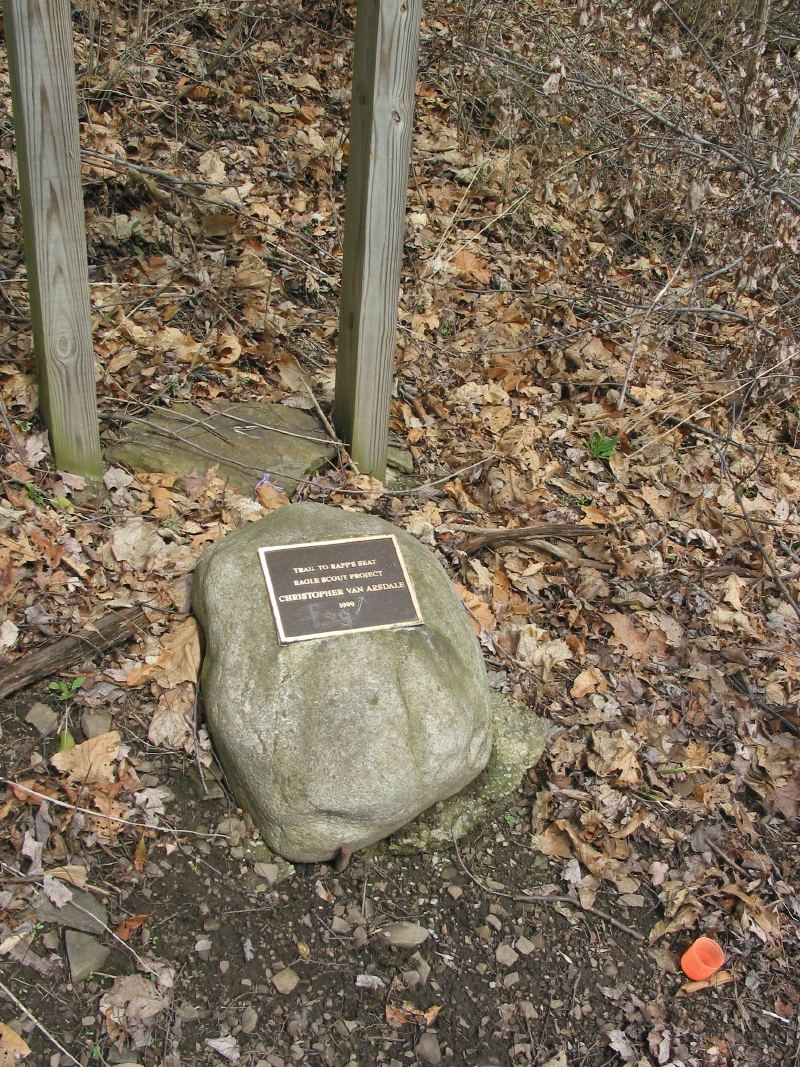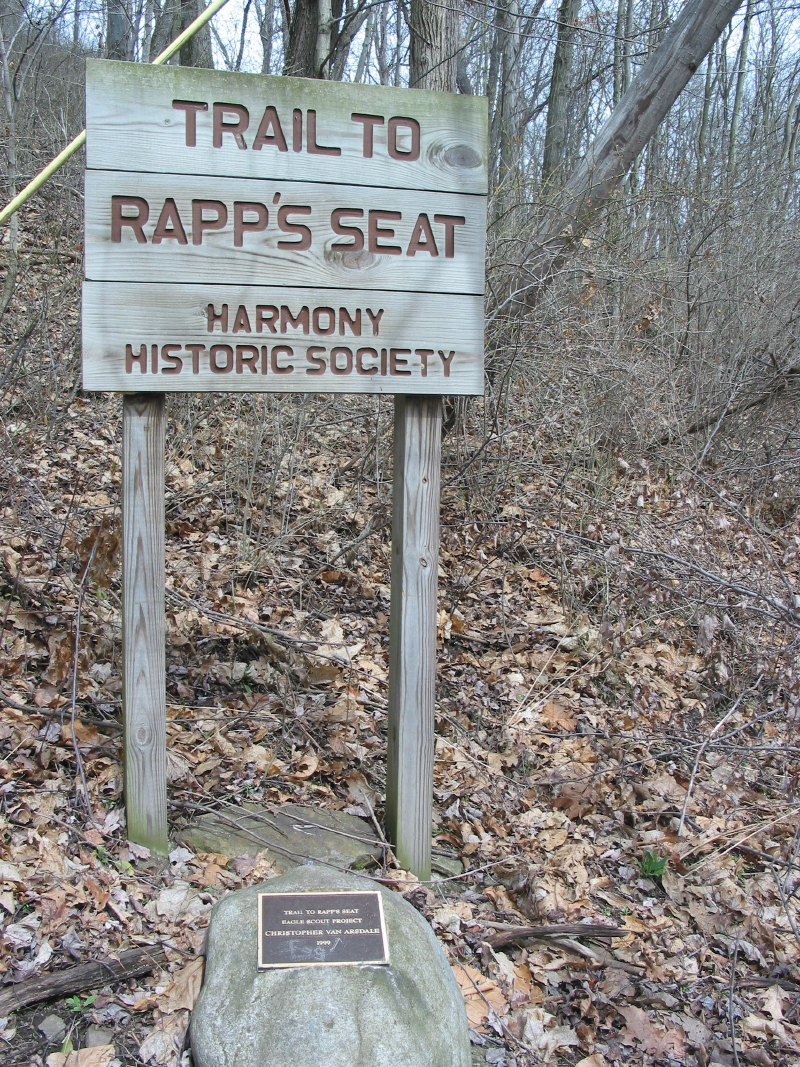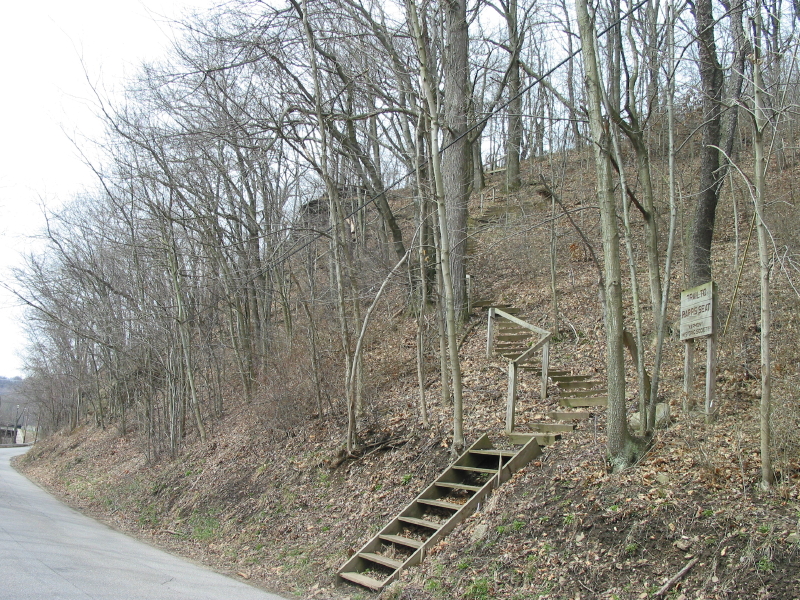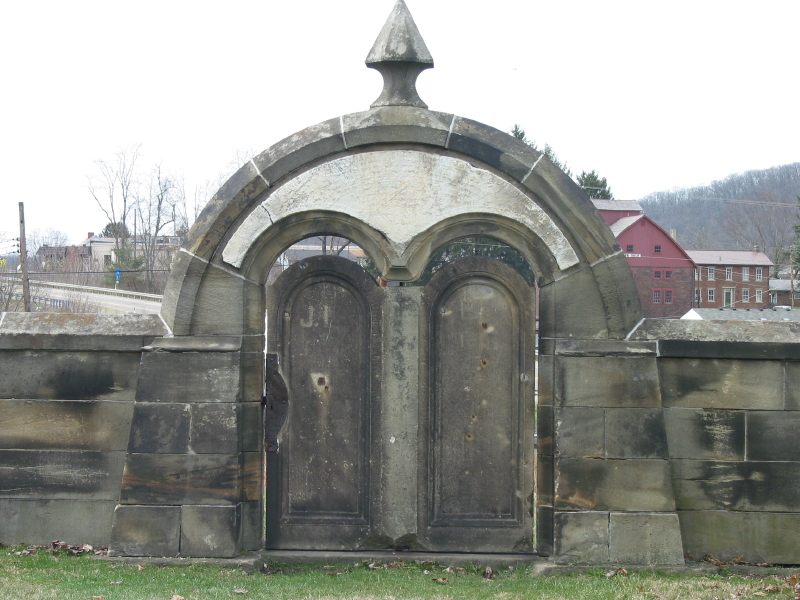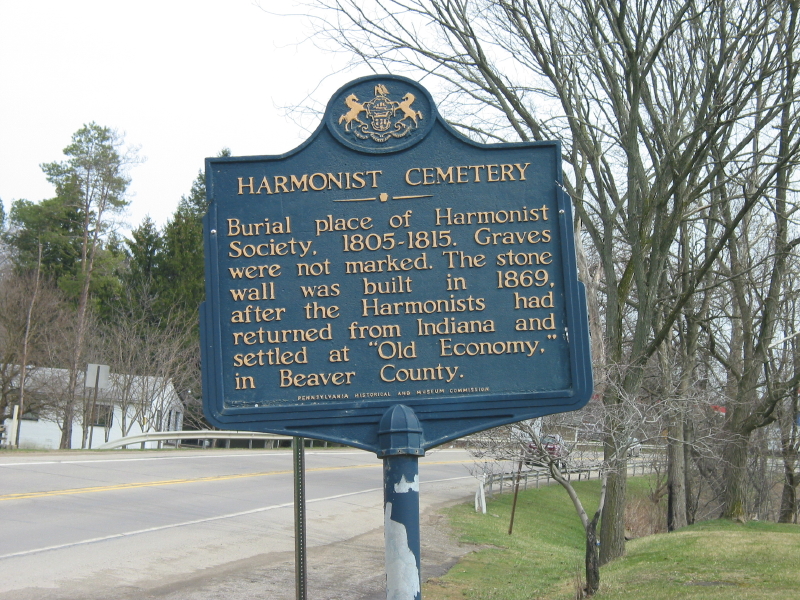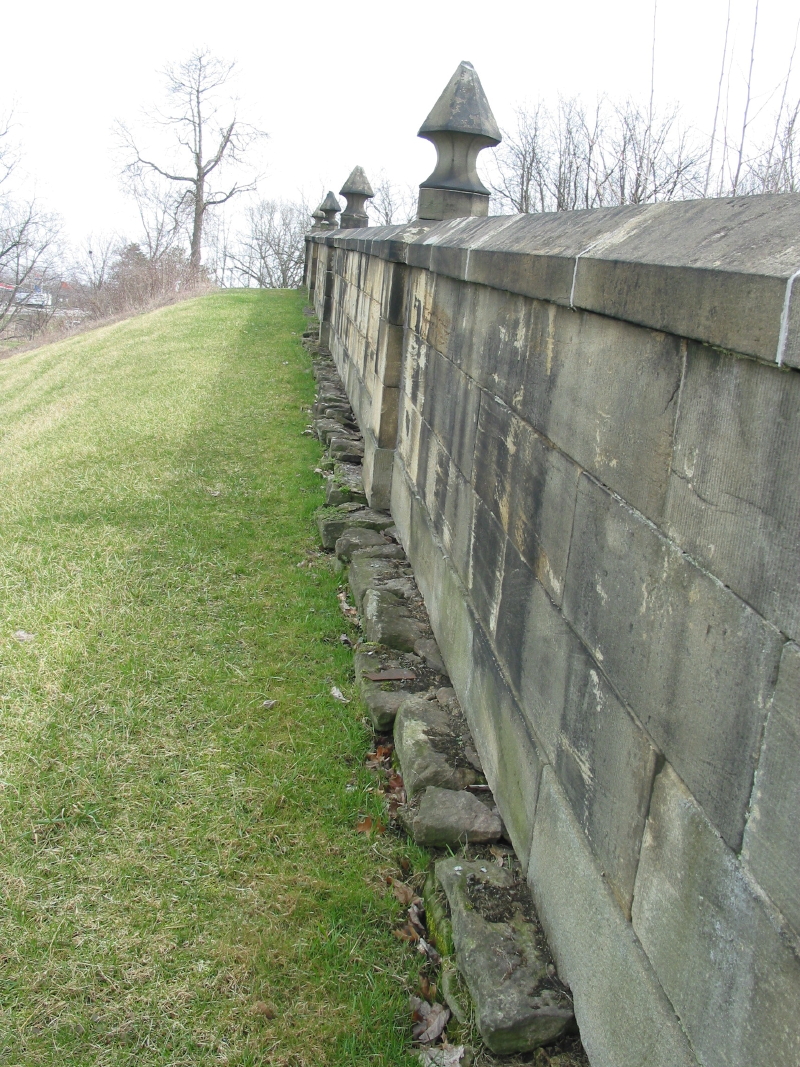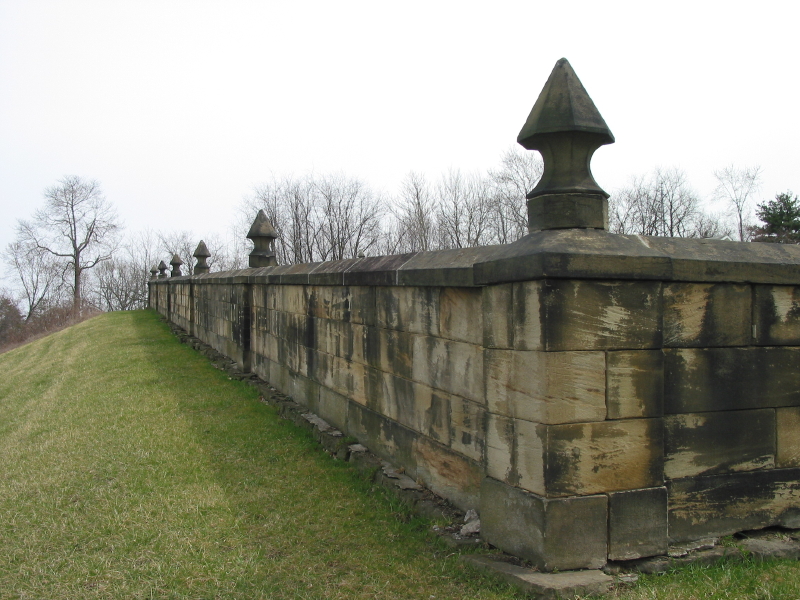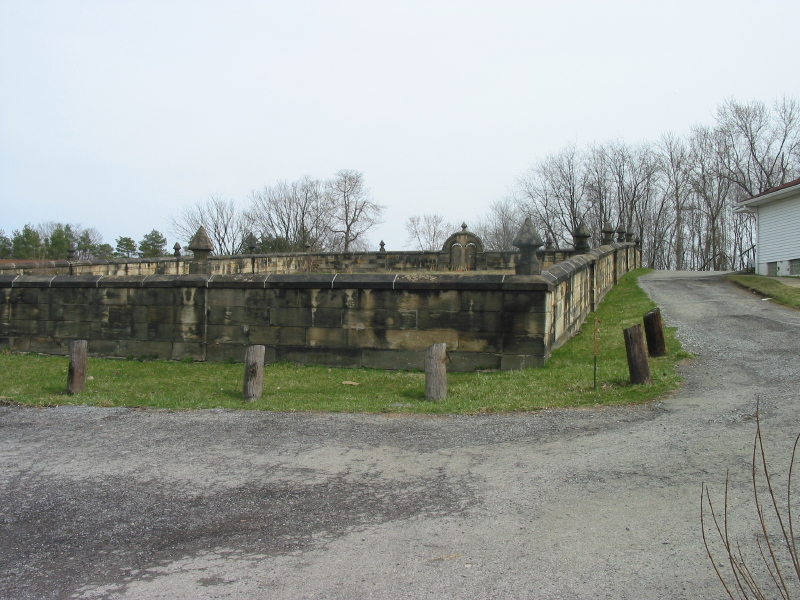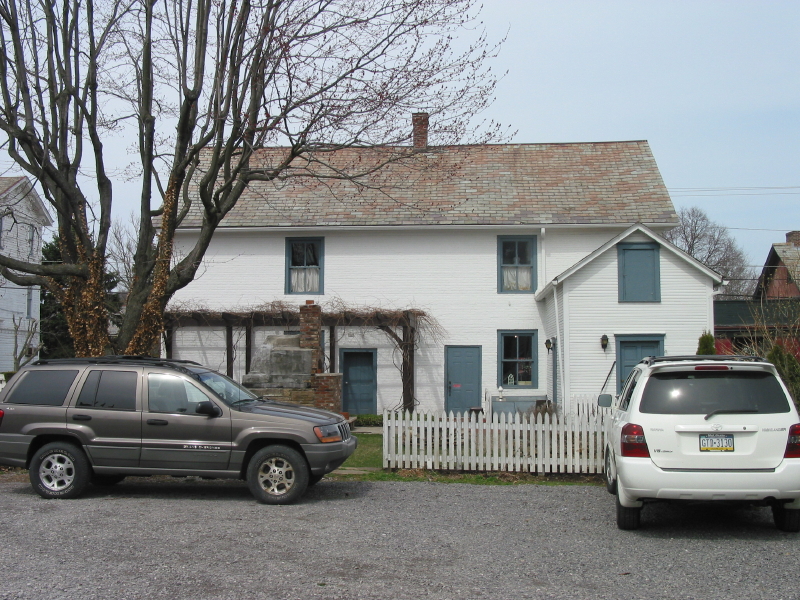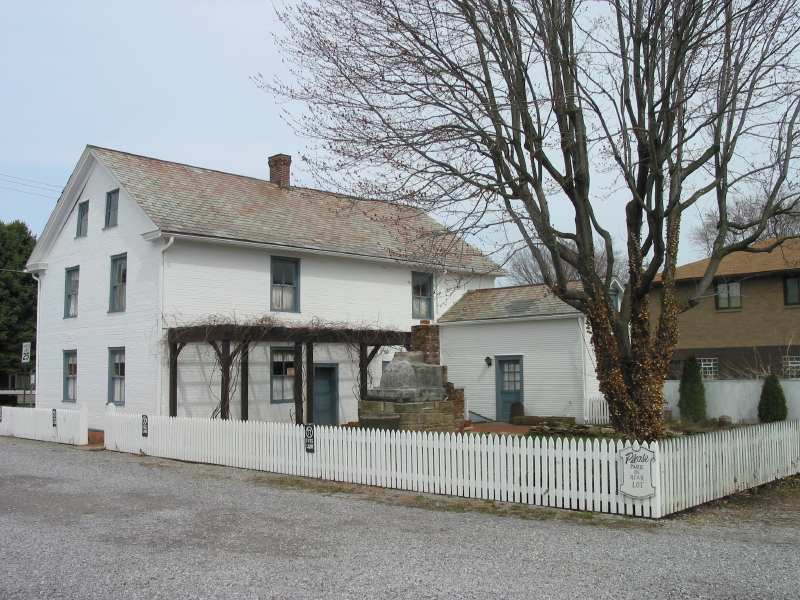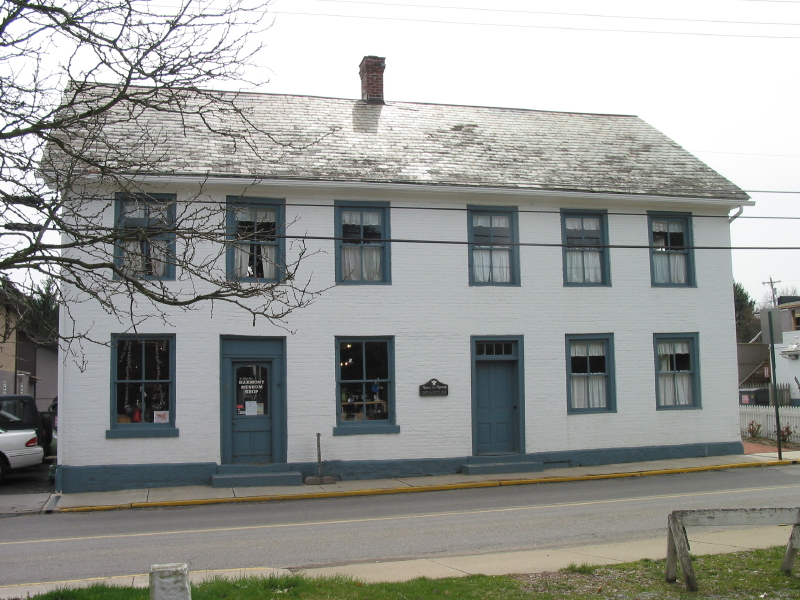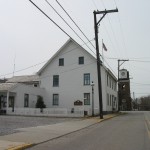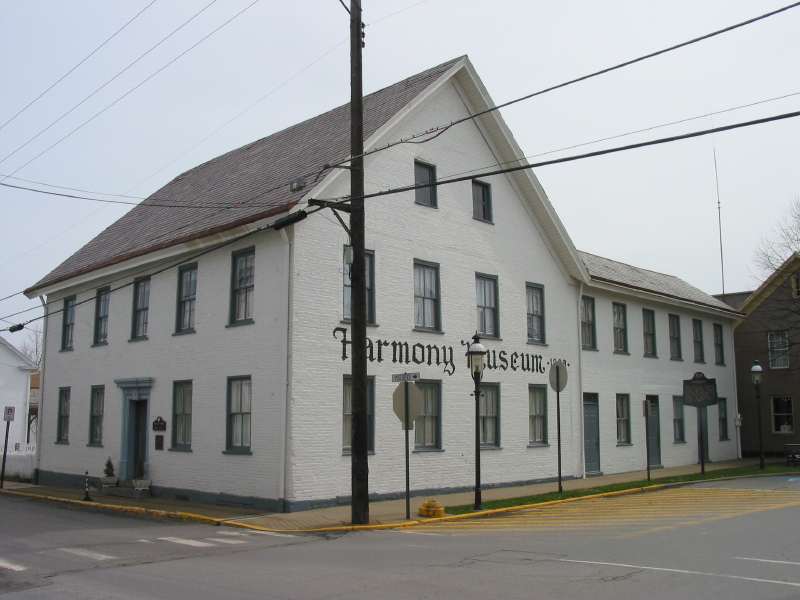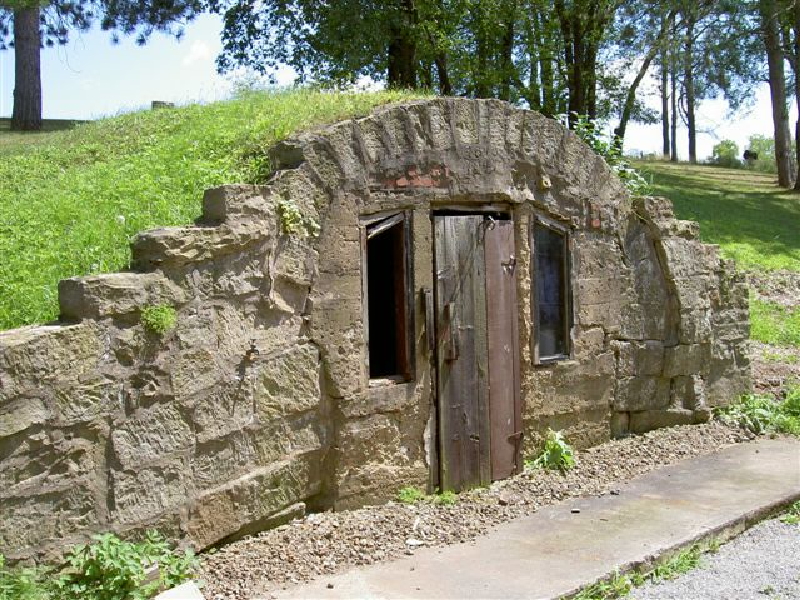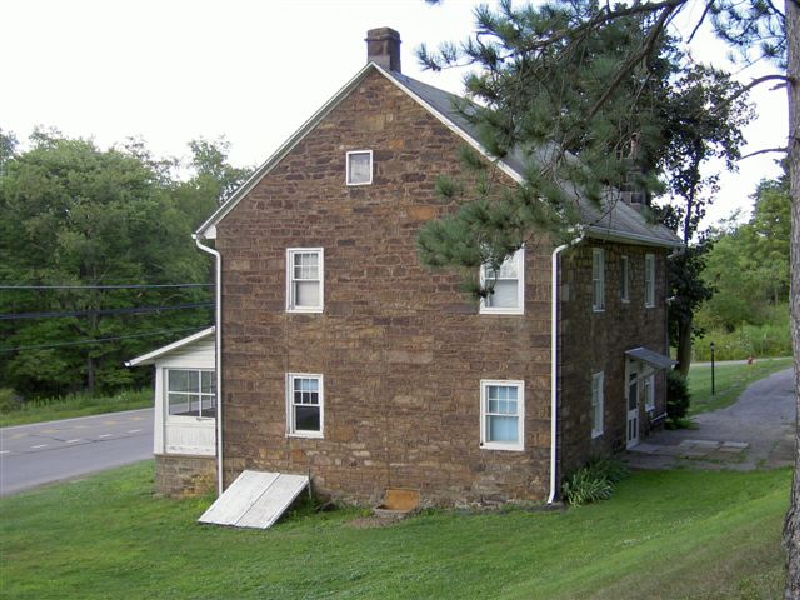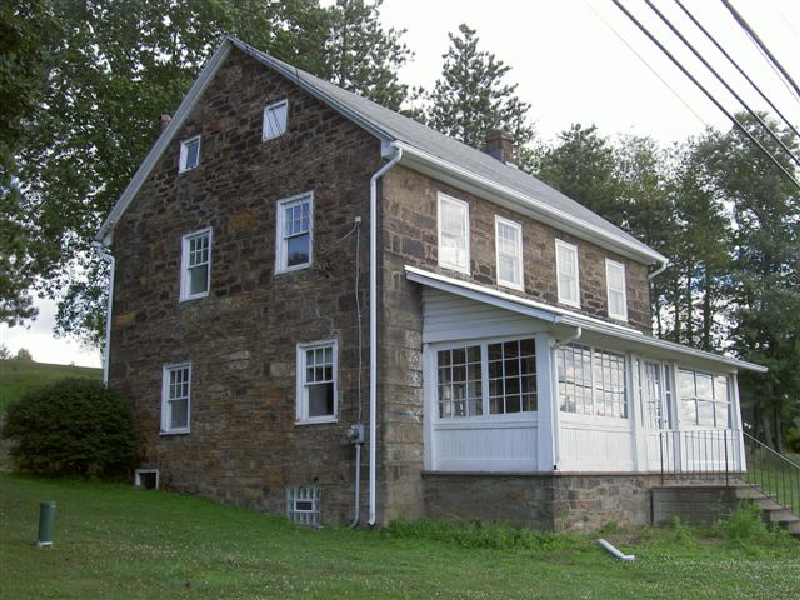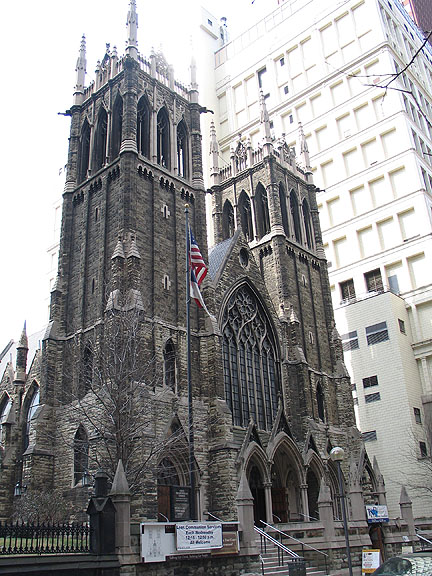
Category Archive: Religious Properties
-
Rodef Shalom’s Garden Grows into Latest Exhibit of Wearable Greens
By Alaina Raftis , TRIBUNE-REVIEW
Thursday, July 15, 2010
The heavily cultivated and well-maintained garden -- which sits on a third of an acre off of Fifth Avenue in Oakland -- was created by Irene Jacob, a botanist who founded the docent program at Phipps Conservatory and Botanical Gardens, and her husband, Rabbi Walter Jacob, to bring people closer to the Bible in a nontraditional way. Justin Merriman | Tribune-Review
The lush greenery at Rodef Shalom’s Biblical Botanical Garden is celebrating it’s 25th year with a new exhibit titled “What Shall I Wear?”
This year, the garden showcases various plants and flowers that have been used to make clothing and fragrances for thousands of years.
The heavily cultivated and well-maintained garden — which sits on a third of an acre off of Fifth Avenue in Oakland — was created by Irene Jacob, a botanist who founded the docent program at Phipps Conservatory and Botanical Gardens, and her husband, Rabbi Walter Jacob, to bring people closer to the Bible in a nontraditional way.
Often referred to as “Little Israel” because its geography replicates the confines of the Holy Land, the garden features various miniature landmarks such as Mt. Hermon, a mound of stones stacked beneath the shade of the billowing Acacia trees, and the Jordan River, a tranquil stream of water trickling from one corner of the garden to another.
The thousands of signatures penned in the guest book each season are only one sign of the garden’s success.
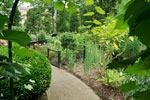
Often referred to as "Little Israel" because its geography replicates the confines of the Holy Land, the garden features various miniature landmarks such as Mt. Hermon, a mound of stones stacked beneath the shade of the billowing Acacia trees, and the Jordan River, a tranquil stream of water trickling from one corner of the garden to another. Justin Merriman | Tribune-Review
“This is the largest and most complete garden of its kind,” says Arlyn Gilboa, who has been a docent at the garden for 15 years, “It’s wholly dedicated.”
The garden contains 56 out of 110 plants specifically mentioned in the Bible and an additional 50 flowers that Jacob added to awaken the verdant oasis.
“Some people come to Pittsburgh just to see the garden,” says Jean Simon, another docent.
Plants that aren’t mentioned in the Bible were given creative names such as, “Jacob’s Coat,” “Angel’s Tears” and “Elijah’s Blue” to play along with the biblical theme.
This year’s exhibit “was just something new that we haven’t focused on before,” Gilboa says. “Sometimes our exhibits don’t have biblical roots, but this year it certainly does.”
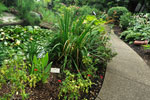
The garden contains 56 out of 110 plants specifically mentioned in the Bible plus more. Justin Merriman | Tribune-Review
Some of the plants featured in this year’s exhibit are used for the essential oils in perfumes and fragrances. They include, among others, banana shrubs, carnations, chamomile, gardenia, geranium, jasmine, kumquat, lemon verbena, mock orange, musk plant, myrtle, patchouli, rose, rosemary and sage. The cotton and flax plants also are displayed and both have been used to make clothing since the ancient times.
“It’s a wonderful thing,” Gilboa looks at the two massive Cedar of Lebanon trees at the entrance to the garden. “The fact is that the ancients were dependent on plants, and so are we. For me, I feel a strong connection with Jewish history when I’m here. It’s such a treat.”
Rodef Shalom Biblical Botanical GardenWhen: Through Sept. 15. Hours: 10 a.m.-2 p.m. Sundays-Thursdays; 7-9 p.m. Wednesdays; noon-1 p.m. Saturdays Guided tours available 12:15-1 p.m. Aug. 6 and Sept. 3
Admission: Free
Where: Rodef Shalom Temple, 4905 Fifth Ave., Oakland
Details: 412-621-6566
-
Steel Valley Agency Eyes Old Gym For After-School Use
By Chris Ramirez
PITTSBURGH TRIBUNE-REVIEW
Thursday, July 15, 2010
Christian Michaels, 8, shoots hoops during a summer camp at Homestead United Prebyterian Church in Homestead. The camp is organized by the Methodist Union of Social Agencies, or MUSA, which wants to run after school programs for middle school children in the Steel Valley Council of Governments' gymnasium. James Knox | Tribune-Review
Decades ago, the old gymnasium attached to the Steel Valley Council of Governments building was the place to go for pick-up basketball games and summer youth camps.
Not so much now.
Amid the walls, streaked with unsightly graffiti and time-yellowed pin-ups, the Rev. Jim Cannistraci sees potential.
He and a small-but-growing band of community leaders are trying to generate local support — and money — to convert the aging gym into a state-licensed center for programs that cater to middle school children.
“This isn’t my dream. It’s the dream of the community,” said Cannistraci, executive director of the Methodist Union of Social Agencies. “People want this and people need this.”
They envision starting a program that would see to the needs of children from West Homestead, Munhall and Homestead, where half the population is black and one in four residents lives below the poverty line, according to U.S. Census figures.
Among services Cannistraci hopes can be offered at the center would be help with homework, access to computer labs and career exploration sessions. The Methodist Union wants the program to start Sept. 1, but needs to raise more than $100,000 before then for improvements to the gym.
Cannistraci envisions the program serving about 50 students by the end of the upcoming school year, but expects it eventually to cater to as many as 125.
“A lot of kids get out of school at three, but their parents are still at work. That’s also when they face a lot of temptation to do things that can get them in trouble,” said Douglas R. Spencer, executive director for the Allegheny Children’s Initiative, a South Side nonprofit pushing for the change. “That time needs to be occupied with structured activities.”

RaVyn Wright, 9, (left) and Edaiza Sands, 10, have fun playing computer games during a summer camp at Homestead United Prebyterian Church in Homestead. The camp is organized by the Methodist Union of Social Agencies, or MUSA, which is looking to generate funds to renovate the former gym and building that belonged to Homestead High School for an after school program that would see to the needs of children from West Homestead, Munhall and Homestead.
Homestead does not have a YMCA, Boys and Girls clubs or a private community center for middle school students to go to in the afternoon as neighboring communities do. A local chapter of the Salvation Army offers a free after-school program for children ages 6 to 12, and Methodist Union of Social Agencies holds after-school programs at Barrett and Park elementary schools.
For more than 80 years, the Methodist Union has aided families and children of the Mon and Steel valleys. The past three decades have been among the most challenging as the two areas struggle to find solid financial footing in the wake of the steel industry’s collapse.
Last week, the Steel Valley Council of Governments, which owns the gym, examined the prospect of an after-school program at a public meeting.
The gym for years belonged to Homestead High School and often was the backdrop to basketball games and large student assemblies. But that changed in 1979 when the Homestead school district merged with West Homestead and Munhall to form the Steel Valley School District.
The Allegheny Works program, which offered job-training programs and operated out of the old high school as the collapse of the steel industry began in the 1980s, used the gym for workshops for many years. These days, however, the gym is used only sparingly.
The Steel Valley Council of Governments says the gym is habitable, but $750,000 is needed to make it usable for a variety of purposes in addition to the after-school program.
-
Carnegie Catholic Church May Get $7.1M Renewal
By Jeffrey Widmer
TRIBUNE-REVIEW NEWS SERVICE
Thursday, July 8, 2010The old St. Luke’s Church in Carnegie might gain new life.
The Carnegie planning commission last month approved plans to renovate the red brick church at Third Street and Third Avenue. It closed after being ravaged by flooding caused by Hurricane Ivan in September 2004.
It would reopen as the official center of the St. Elizabeth Ann Seton parish, though council must approve the plans.
According to information provided by the Rev. David Poecking in St. Luke’s June 13 bulletin, the parish hopes to have a final draft before the end of July.
The church estimates that the project will cost about $7.1 million; about $500,000 of that has been paid for, according to Poecking.
The parish has $3.4 million more for the project, leaving $3.2 million to be covered through a combination of further insurance payouts from the 2004 flood, the sale of Seton Hall in Carnegie and St. Ignatius in Scott, and a fund-raising campaign, Poecking said.
-
Challenge Grant Deadline June 30: Please Contribute Now
PHLF News
June 16, 2010Six weeks ago, PHLF and two of its members pledged $37,500 for an all-or-nothing challenge grant to jump-start our Historic Religious Properties Program that provides matching grants and technical assistance to architecturally significant historic religious properties in Allegheny County who need to undertake critical building repairs.
The challenge grant is contingent on members and friends matching that amount by June 30. This is a terrific opportunity to do as much as we can to build support for our historic religious properties program. We’ve made good progress so far and encourage you to contribute, if you have not yet done so.
To contribute by credit card, use the Targeted Donation Today option on our home page at www.phlf.org, or call Mary Lu Denny (412-471-5808, ext. 527) to process your gift. Or, mail a check payable to “PHLF” and referenced “HRP” (100 W. Station Square Drive, Suite 450, Pittsburgh, PA 15219).
We thank the many members and friends who have already contributed and encourage those who have not yet done so to contribute in the next 15 days. If we can raise $37,500, then two PHLF members will contribute a $25,000 match and PHLF will contribute a $12,500 match. Those contributions, combined with year-end gifts from 2009, will make it possible for PHLF to offer another round of matching grants and technical assistance so architecturally significant historic religious properties in Allegheny County can restore stained glass, repair leaking roofs, and re-point masonry, among other restoration work.
Remember, PHLF is the only nonprofit organization in Allegheny County that helps historic religious properties restore the significant places serving as centers of worship and providing social and cultural services to many people. Your gift will help us continue this valuable program of financial and technical assistance.
We thank you for doing your part during this challenge grant campaign. In July, we will send you news of the campaign results. Your ongoing support helps us protect the places that make Pittsburgh home.
-
48 More Days to Reach Challenge Grant Goal of $37,500
PHLF News
May 12, 2010We are making good progress but need your help to reach our goal of raising $37,500 by June 30 in support of our Historic Religious Properties (HRP) program. To contribute by credit card use the Targeted Donation Today option on the left hand side of this page, or call Mary Lu Denny (412-471-5808, ext. 527) to process your gift, or mail a check payable to “PHLF” and referenced “HRP” (100 W. Station Square Drive, Suite 450, Pittsburgh, PA 15219).
We thank the many members and friends who have already contributed. Once we raise $37,500 then two PHLF members will contribute a $25,000 match and PHLF will contribute a $12,500 match. Those contributions, combined with year-end gifts from 2009, will make it possible for PHLF to offer another round of grants and technical assistance to architecturally significant historic religious properties in Allegheny County who need to undertake critical building repairs.
PHLF is the only organization in Allegheny County that commits resources to help historic religious properties restore the significant places serving as centers of worship, while also providing social and cultural services to many people. Our grants have helped congregations repoint masonry, restore stained glass windows, and repair roofs, gutters, steeples, towers, domes, and steps.
This program has tremendous impact and community benefit. Over the years grant recipients have said:
- “We thank PHLF and its Historic Religious Properties Program for the emotional support, the training made available, encouragement, and the financial grant support.”
- “Thanks so much for the help PHLF has provided. Relief from the structural building problems has provided a greater peace of mind and allowed our attention to be more concentrated on people.”
- “Thanks to PHLF a valuable community asset has been able to maintain its property and continue its outreach to those in need of services in a viable building.”
- “Without your matching grant we could not have accomplished the building repairs.”
- “After 10 years of an uphill struggle, PHLF’s grant was a much needed boost.”
- “Your grant will help us to protect the integrity of the structure so that we may continue to serve our community for years to come.”
People making a gift of $1,000 or more before June 10 will be invited as our guest to our June 23 Heritage Society reception and recognition dinner at Oakmont Country Club, honoring Carol Semple Thompson, storied amateur golfer and 2010 USGA Women’s Open General Chairman. The June 23 event will include a tour of the clubhouse, dinner, and the opportunity to meet Carol Semple Thompson.
This challenge grant opportunity is taking the place of PHLF’s typical year-end solicitation, so now is the time to give in 2010! Help us meet our goal of raising $37,500 by June 30.
-
All or Nothing Challenge Grants Announced
PHLF News
April 26, 2010Thanks to two of our members, the Pittsburgh History & Landmarks Foundation may receive $25,000 in matching grants to get our Historic Religious Properties Program (HRPP) back up and running. The grant, however, is contingent upon
PHLF’s members and friends contributing $25,000 in new HRPP support by June 30th. That’s just 65 days away!
Given the severity of our recent winter and its impact on Allegheny County historic religious properties, we have taken the unusual step of moving our annual appeal up eight months to do everything we can to take advantage of this opportunity. We’re also adding our own match of up to $12,500 for every dollar raised in excess of $25,000.
Your generosity now will help us reach our goal of securing two challenge grants. You can make a tax-deductible targeted donation by credit card on our web site (on left hand side of this page), or by contacting Mary Lu Denny (412-471-5808, ext. 527). Or, mail a check payable to “PHLF” and referenced “HRP” to Mary Lu Denny, PHLF, 100 West Station Square Drive, Suite 450, Pittsburgh, PA 15219.
Thank you for helping us restore our Historic Religious Properties Program by June 30, 2010.
Since 1997, members and friends have joined with PHLF to provide about $700,000 for more than 100 historic religious buildings whose congregations then matched our grants, bringing total support to nearly $1.4 million. Never will your gift to PHLF mean as much, since every dollar you give now can generate three more.
Remember, it’s all…or nothing when it comes to these challenge grants! Help us earn them both so historic religious properties and the neighborhoods they serve can benefit.
A copy of the official registration and financial information of the Pittsburgh History & Landmarks Foundation may be obtained from the Pennsylvania Department of State by calling toll free, within Pennsylvania, 1-800-732-0999. Registration does not imply endorsement.
-
Historic Harmony Donates Preservation Easements – Eight Properties Under Protection
By Jack Miller
PHLF News
April 20, 2009The Pittsburgh History & Landmarks Foundation (PHLF) has announced that Historic Harmony (HH) has donated preservation easements to PHLF that will ensure the preservation of eight historic HH properties located in Butler County.
All of the protected properties are in Harmony Borough or Jackson Township in the faster growing areas of Butler County according to recent census statistics.
Three of the protected properties, the main Harmony Museum Building at 218 Mercer Street (1809, with 1816 addition), the Wagner House museum annex at 222 Mercer Street (c. 1807 -1812), and the Harmony Society Cemetery at 831 Edmond Street (1805 – 1815) are within the Harmony National Historic Landmark District. The Harmony Society-Ziegler-Wise Barn at 303 Mercer Road (1805, with c. 1850 modification) is eligible for listing in the National Register of Historic Places.
The Vineyard Hill, with George Rapp’s Seat carved into a rock outcrop at 1 Evergreen Mill Road, the likely Harmony Society log house museum annex at 245 Mercer Street, the Mennonite Meetinghouse & Cemetery at 114 Wise Road (1825 and 1815, respectively) and Bishop John Boyer’s House at 295 Perry Highway (1816) are architecturally or otherwise significant historic properties.
A preservation easement is a voluntary legal agreement made between a property owner and an authorized preservation organization to preserve an historic site in perpetuity and recorded as such with the property’s deed.
While granting a preservation easement on a historic property limits what an owner may do with that property, granting the easement provides several benefits. The first and most obvious is that the property owner has protected the historic property in perpetuity from destruction, inappropriate alteration, or development. Another is that an individual or corporate easement donor may be entitled to claim a federal income tax charitable contribution deduction equal to the value of the preservation easement if certain conditions are met.
For example, without the charitable deduction and federal tax credits associated with the restoration of historic properties, projects like the Bedford Springs Resort, Heinz Lofts and the Armstrong Cork Factory Apartments might have never have been developed.
Under terms of its easements, HH will continue to be responsible for the maintenance, upkeep and presentation of its protected properties, and PHLF will be responsible for monitoring the properties in perpetuity to assure compliance with conditions of the easements. No changes can be made to the exterior of any of the sites without PHLF’s prior approval and any changes would have to conform to the Secretary of the Interior’s Standards for Rehabilitation. These requirements will also apply to the Bishop Boyer House, which has always been a private residence and was sold by HH to a private party on the third of April.
“Historic Harmony and PHLF are to be roundly commended for working together to create such a progressive and thoughtful preservation strategy for these significant properties,” said Bill Callahan, the Pennsylvania Historical & Museum Commission’s Bureau for Historic Preservation Western Pennsylvania representative. “What they have accomplished here may well be looked upon nationally as a model for many preservation organizations.”
HH President John Ruch noted that “Harmony was the first home of the communal Harmony Society of German Lutheran Separatists, which founded Harmony in 1804 and organized formally as a Christian communal society in early 1805. George Rapp (1757 – 1847) was its founder and spiritual and organizational head. Designation in 1974 as Western Pennsylvania’s first National Historic Landmark District was recognition of Harmony’s significance in development of the nation’s heritage and culture as the Society’s founding home.
“Many Western Pennsylvanians are familiar with PHMC’s Old Economy in Ambridge,” said Ruch, “but the extraordinary Harmony Society, which became 19th-century America’s most successful communal group, began right here in Harmony.”
“One of the properties now protected by an easement includes the isolated carved rock hilltop seat to which George Rapp would retreat to mediate.”
The idea to place preservation easements on all of HH’s historic properties grew from a proposal to sell the Bishop Boyer House while assuring its preservation.
“The home of Harmony’s first Mennonite bishop, or pastor, was donated to Historic Harmony in 2003 by the late Lillian Frankenstein of Zelienople who entrusted its preservation to us,” Ruch said. “We approached the Pittsburgh History & Landmarks Foundation to explore how we could protect the house even if we no longer owned it. They suggested using a portion of sale proceeds to endow easements that would protect not just the Bishop Boyer House, but all of our historically significant properties.”
As required by HH’s bylaws, the proposal was posed to the organization’s members, who subsequently voted to accept PHLF’s proposal to hold the easements and assume responsibility for their enforcement and defense. All easements were recorded on April 3 when the Bishop Boyer House was sold to Nancy Wilson.
“This is a win-win situation,” said PHLF President Arthur Ziegler. “Historic Harmony is able to honor its commitment to its donor while generating funds to maintain its other historic buildings. We are able to assure the protection of eight architecturally and historically significant properties, and Western Pennsylvanians have guaranteed access to a tangible part of their past.”
PHLF holds nearly 50 preservation easements and deed restrictions on Western Pennsylvania properties, including one it obtained on the 23rd of March on The Carlyle, formerly the Union National Bank Building in downtown Pittsburgh.
“PHLF’s easement initiative has played an important role in protecting historic and architecturally significant properties throughout Western Pennsylvania,” said PHMC’s Bill Callahan.
“While the Harmony easements constitute a highly commendable preservation solution for Historic Harmony and, indeed, the region,” said Callahan, “even more significant is that the action was initiated by a group of citizens passionate about their roots and willing to find a way to assure that their past will always be a part of their future.”
Historic Harmony is a 501(c)(3) nonprofit organization founded in 1943. Its mission is to preserve and promote public knowledge of the Harmony area’s history and heritage through its Harmony Museum and outreach activities, foster tourism in southwestern Butler County in cooperation with other organizations and agencies and encourage preservation of historical resources in support of educational, quality of life, economic development and associated community objectives. More information can be found at www.harmonymuseum.org.
Pittsburgh History & Landmarks Foundation is also a 501(c)(3) nonprofit organization founded in 1964 whose mission is to identify and save historically significant places; revitalize historic neighborhoods; preserve historic farms and historic designed landscapes; and educate people about the Pittsburgh region’s rich architectural heritage. More information can be found at www.phlf.org.
-
Historic Religious Properties Committee Awards Grants
January 14, 2009
PHLF NewsToday, the Pittsburgh History & Landmarks Foundation’s Historic Religious Properties Committee awarded $31,000 in grants to 8 congregations, plus 3 Technical Assistance Grants and 1 Energy Study. The committee reviewed 22 applications from historic religious properties in Allegheny County. Requests amounted to over $170,000.
Grant recipients are:
- Allegheny Unitarian Universalist Church on the North Side;
- The Church of the Holy Cross in Homewood;
- First Presbyterian Church, downtown;
- Glenshaw Presbyterian Church, Glenshaw;
- St. Philip Church, Crafton;
- Swissvale United Methodist Church, Swissvale;
- Triumph the Church & Kingdom of God in Braddock; and
- Valley View Presbyterian Church in Garfield.
The projects funded by these grants are all critical to the integrity of the structure. They involve roofing, gutter and downspout replacement, and masonry work.
Congregations receiving Technical Assistance Awards are:
- Kerr Presbyterian Church in Verona;
- Stewart Avenue Lutheran Church in Carrick; and
- Waverly Presbyterian Church in Regent Square.
Deer Creek United Presbyterian Church in Gibsonia was awarded an Energy Study Grant.
The impact of the nation’s economic crisis has resulted in a reduced level of funding available for all PHLF programs this year, including its Historic Religious Properties Program. Fortunately, though, members and trustees responded more generously than ever to our special year-end appeal by donating a total of $31,000 to the HRP Program.

